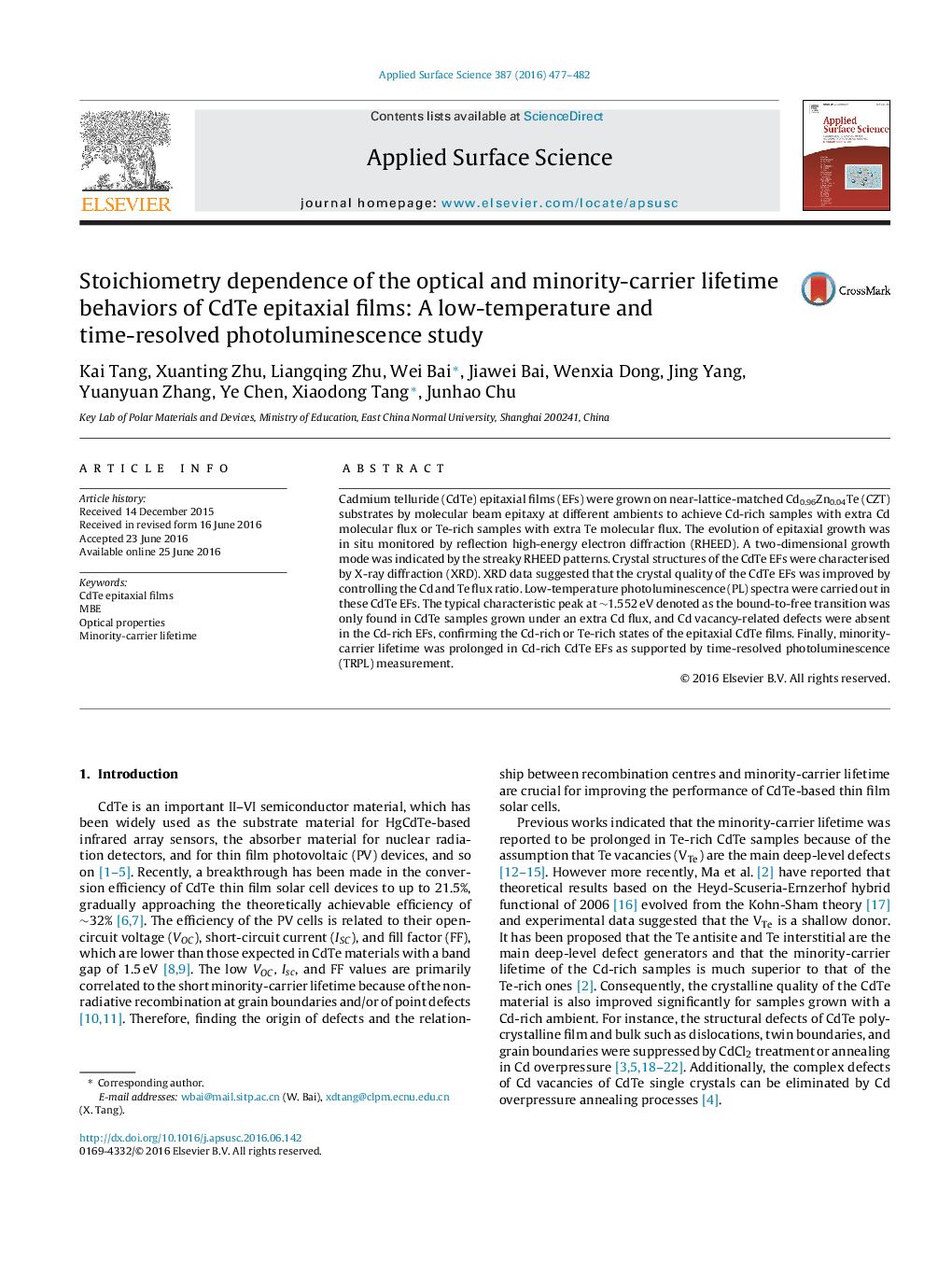| Article ID | Journal | Published Year | Pages | File Type |
|---|---|---|---|---|
| 5353657 | Applied Surface Science | 2016 | 6 Pages |
Abstract
Cadmium telluride (CdTe) epitaxial films (EFs) were grown on near-lattice-matched Cd0.96Zn0.04Te (CZT) substrates by molecular beam epitaxy at different ambients to achieve Cd-rich samples with extra Cd molecular flux or Te-rich samples with extra Te molecular flux. The evolution of epitaxial growth was in situ monitored by reflection high-energy electron diffraction (RHEED). A two-dimensional growth mode was indicated by the streaky RHEED patterns. Crystal structures of the CdTe EFs were characterised by X-ray diffraction (XRD). XRD data suggested that the crystal quality of the CdTe EFs was improved by controlling the Cd and Te flux ratio. Low-temperature photoluminescence (PL) spectra were carried out in these CdTe EFs. The typical characteristic peak at â¼1.552Â eV denoted as the bound-to-free transition was only found in CdTe samples grown under an extra Cd flux, and Cd vacancy-related defects were absent in the Cd-rich EFs, confirming the Cd-rich or Te-rich states of the epitaxial CdTe films. Finally, minority-carrier lifetime was prolonged in Cd-rich CdTe EFs as supported by time-resolved photoluminescence (TRPL) measurement.
Related Topics
Physical Sciences and Engineering
Chemistry
Physical and Theoretical Chemistry
Authors
Kai Tang, Xuanting Zhu, Liangqing Zhu, Wei Bai, Jiawei Bai, Wenxia Dong, Jing Yang, Yuanyuan Zhang, Ye Chen, Xiaodong Tang, Junhao Chu,
